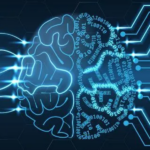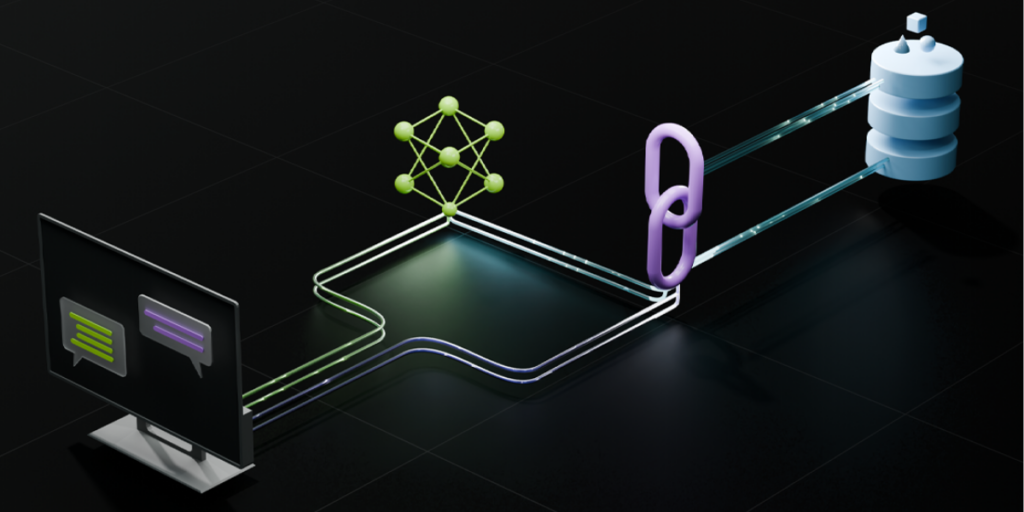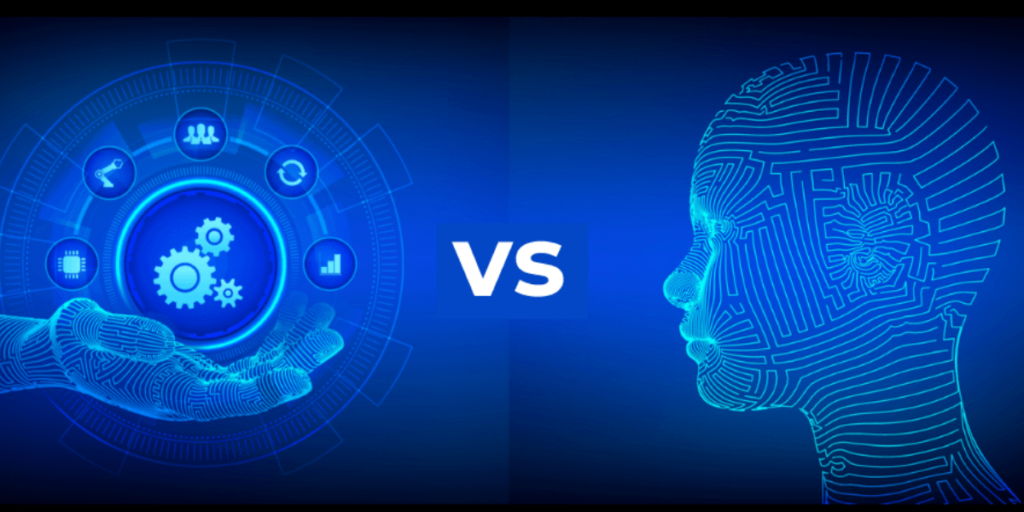Enterprise AI refers to the artificial intelligence tools employed by businesses to improve their business operations and gain competitive advantage. AI techniques include machine learning, natural language processing robotics, and computer vision systems, which require advanced software and hardware that are challenging to implement and rapidly changing. Enterprise AI applications also require skilled professionals and huge amounts of high-quality data.
Artificial Intelligence for Enterprises has been transforming across different industries, altering the way businesses operate, compete, and create. In 2024, Enterprise AI will become the center of attention and transform everything from decisions to customer interactions.
What exactly does it mean to Enterprise AI? How can you take advantage of this advanced technology to stay ahead of the game?
Let’s get started.
What is Enterprise AI?
Enterprise AI refers to using and applying artificial intelligence in large teams. AI’s primary objective for businesses is to assist in achieving key business goals.
Due to huge data assets, large teams, and operations, businesses require AI to reduce time, improve business processes, and make data-driven decisions.
These solutions usually are integrated with your in-place technology stack and improve them.
The core of enterprise AI includes AI software that uses modern methods, including machine learning models, deep learning, natural Language Processing (NLP), and computer vision.
These tools allow organizations to automate processes for a variety of applications, simplify complicated business processes, automate repetitive tasks, and use all the information they accumulate.
Benefits of Implementing AI in Enterprises
Artificial intelligence will not disappear; it’s time to change and use it effectively. We’ve outlined the advantages of incorporating Enterprise AI Software Solutions into your company.
Improved Decision Making
Artificial Intelligence (AI) exposes the details humans miss by examining intricate subjects with accuracy and understanding. The insights from AI’s analysis are precise and assist in making better decisions across various business areas, such as risk management, resource allocation, and sales forecasting.
Improved Research and Development
AI-powered systems can speed up R&D and reveal opportunities for new products by analyzing massive datasets and discovering patterns. This rapid innovation allows companies to launch new products quickly, ensuring their competitiveness.
Personalized Customer Service Delivery
AI analyzes and teaches from data to create highly personalized and customized experiences and products. Streaming services like Netflix and retail stores use smart systems to analyze purchasing patterns, individual consumer information, and vast datasets to understand customers’ preferences, styles, and requirements.
Operational Cost Optimization
AI can lead to substantial savings as it automatizes routine tasks. An example of enterprise AI can be seen in finance departments using AI-led automation to eliminate humans’ involvement in managing invoice expenses, invoice processing, and financial reporting.
Improved Talent Acquisition and Retention
Using AI-based tools that utilize a smart business AI strategy greatly improves the recruitment process. They are able to determine the most suitable candidates according to the specific criteria in the job description. AI also assists organizations in predicting whether an employee will quit within a specific time period after they have hired them.
Challenges and Considerations in Enterprise AI Adoption
Each new method comes with its own set of challenges. We must understand the issues of AI in the enterprise:
Data Privacy and Security
When companies integrate AI, they should prioritize data security and privacy. AI systems can often access large quantities of sensitive data and raise concerns over data security breaches and misuse. Secure encryption, robust encryption, storage, and rigorous access control safeguard the information. Conformity with global regulations on data protection, like GDPR within Europe and CCPA in California, is crucial.
To ensure the integrity of data and customer trust, companies must follow privacy-by-design principles, conduct frequent security audits, and remain up to date with regulatory changes. Additionally, techniques for anonymization and safe multi-party computation could increase data privacy and enable AI models to work safely.
Skill and Expertise Development
The growing demand for highly skilled AI professionals underscores the importance of acquiring AI skills within businesses. To meet this need, it is imperative to improve the skills of existing employees and recruit new talent. Companies can take advantage of training programs, workshops, and certification courses to equip employees with AI capabilities and a complete set of skills.
Additionally, collaborations with academic institutions and participation in industrial consortia may assist companies in staying ahead of AI advancements. Fostering an environment that is continuously learning and encouraging cross-functional collaboration can help ensure that AI knowledge is properly integrated into daily operations, boosting innovation and increasing overall AI adoption.
System Integration
Integrating AI in existing IT infrastructures can pose several challenges, mainly when working with older systems. Successful integration requires a deep knowledge of AI technology and the IT environment. The best techniques to ensure an effortless AI implementation include
- conducting a thorough analysis of the infrastructure currently in place
- identifying the best interaction points and
- Making sure that legacy systems are compatible.
A3Logics improves compatibility by acting as a bridge to AI applications and systems already in place. In addition, adopting a modular approach to system integration and adding AI components over time can minimize disruptions and aid in troubleshooting and optimizing.
Ethical and Bias Concerns
Enterprises should focus on eliminating biases in AI systems and ensuring ethical AI operations. AI biases can lead to unfair outcomes and harm a company’s reputation. To combat this problem, companies should establish standards and guidelines to ensure ethics-based AI implementation, like the ones offered by AI ethics boards and industry standards.
Employing techniques for bias detection and mitigation while creating and implementing AI models is essential. Regular audits and transparency in AI processes can help ensure ethical guidelines are observed. In addition, incorporating different teams into the AI development process will offer a variety of perspectives, reducing the chance of faulty conclusions and fostering fairness within enterprise AI systems.
Crafting an Enterprise AI Strategy
Implementing AI in the enterprise is not a universal method. To reap the advantages, companies require an established AI strategy customized to their particular requirements and objectives.
Assess Your Current Capabilities
Before you dive into AI adoption, consider taking the time to look over your organization’s current abilities. Do you have the correct infrastructure for data? Do your employees have the skills required to use AI?
An in-depth assessment can assist you in identifying areas for improvement and gaps and will ensure a smooth transition to AI-powered processes.
Define Clear Objectives
Next, you must establish clear goals for your business AI strategy. What are the specific issues you’re trying to resolve? What are your primary indicators of performance (KPIs)?
With clear goals, you can ensure that your AI initiatives align with your company’s overall goals to maximize the value of your investment.
Choose the Right AI Tools
Many AI tools are made to be the same. When choosing the right enterprise AI tools, it is essential to select tools that work with your particular requirements and goals. Whether it’s machine learning algorithms, natural language processing, or computer vision, be sure you’re investing in appropriate technology for your company.
Foster a Culture of Innovation
AI adoption is more than technology alone. It requires a culture change. Inspire your employees to embrace AI, experiment with fresh ideas, and think outside the box. If you foster an environment of creativity, using AI to achieve long-term success will be easier.
Enterprise AI Applications
There are a myriad choices of corporate AI applications available currently. One of the choices is:
Personalization and Customer Experience
AI personalization is all over the media and in consumers’ products. For instance, viewers watching Netflix, buying at Amazon, or listening to Spotify can be guided by AI. Customers do not just appreciate the assistance; they anticipate it.
Financial Reporting and Accounting
With the staggering volume of financial data to process, businesses use enterprise AI for assistance. Big models of language (LLMs) can help reduce the number of tasks that teams have to do, which frees their time for more productive tasks and reduces mistakes in areas like data processing, transaction categorization, and invoice processing.
Predictive Maintenance and Risk Management
Predictive maintenance can help businesses anticipate issues before they occur, protect airline customers, and reduce carbon emissions. Predictive models used to gauge risk can help employees concentrate on problems in real time, even before they happen, avoiding potentially fatal mistakes in some instances.
Process Optimization and Automation
repetitive tasks like data entry can be time-consuming and distract workers from more exciting and worthwhile tasks. In addition, errors made by hand can derail businesses’ money. Automating these tasks using AI can help streamline processes and help redirect resources. For instance, automation in data intelligence platforms can change how businesses handle their data, decreasing mistakes and enhancing the overall data management experience.
Chatbots and Virtual Assistants
Employing enterprise AI for customer support could increase efficiency, reduce expenses, and improve customer experience. Research shows that chatbots can cut customer service costs by up to 30%, and 87% of clients are comfortable or content when using chatbots. Voice assistants can help different capable people find information, increasing your company’s visibility and image.
Emerging Enterprise AI Trends in 2025
These are a few primary business AI trends that every business manager should know.
AI-driven Solutions for Providing a More Personal Experience
However, conversational AI, NPL, and LLM are gaining momentum. Chatbots are more effective for any query. ChatGPT can be utilized to provide a personalized chat as a human would.
In the years to come, in the year 2030, statistics indicate that the market for chatbots is likely to grow to $27. 2 million. This means that Generative AI-related development tools will also be available on demand.
Sentimental AI is also an emerging trend. This type of AI allows for the analysis and interpretation of human emotions based on text, speech, and even vision input.
Consequently, This business AI trend is integral to delivering customized products, services, and communications.
For instance, large stores such as Amazon use AI to discover their customers’ purchasing habits and preferences and provide truly personalized products. This could boost sales and enhance the shopping experience.
In the same way, other mainstream industries, including marketing industries, can now use the concept of personalization based on AI technology.
Integration of AI in Enterprise Software
There is an idea that AI will replace humans in the workplace. This is not true. The principal reason for introducing AI is to improve work efficiency.
In 2024, AI can be easily integrated into applications such as Microsoft 365, Google Workspace, Salesforce, and Atlassian. This means that tasks will be automated, as will smarter suggestions and more effective decision-making. Therefore, the business is gearing up to be ready for an AI-powered office revolution.
Additionally, the positive effect of AI’s introduction into the workplace has been observed across the globe.
According to this Forbes Advisor survey, 64 percent of business owners consider artificial intelligence to be the most effective method of building solid customer relations.
Other studies suggest that AI is predicted to increase productivity by 40% by 2035.
AI-Powered Automation and Workflow Optimization
If you look at the range of enterprise-oriented products, automation has been commonplace for some time and is still a hot topic. The hype has risen to a different level after the advent of AI to aid in automation.
At present, AI is being employed to automate operations that require advanced processes so that the need for manual intervention is reduced.
Whether it’s robotic processing of mundane tasks like data entry, customer service, or enhanced control of supply chains, AI is enabling businesses of various sizes and shapes to run more efficiently.
It is also possible to bring back the cost of operations to a minimum level. In addition, integrating RPA with AI will be the most effective option for companies that want to benefit from productivity and scaling.
Companies that want to be competitive in 2024 must consider AI-driven automation tools. Creating such tools using software development tools will help streamline business processes, allowing resources to perform these value-added tasks.
Use of AI for Data Extraction and Better Decision-Making
In 2024, AI can be the most effective partner in enterprise decision-making. How?
Businesses use AI-powered analytics tools to collect additional data, allowing them to gain profound insights into their operations, customers, and markets.
Through this information, businesses can make decisions based on data.
AI tools can analyze massive amounts of unstructured and structured data and identify patterns and trends that are difficult for humans to recognize.
This way, companies can anticipate market trends before they occur. Data can also be used to anticipate customer behavior and adapt strategies to changing market conditions.
In the financial industry, AI can analyze market trends and the risks associated with investments, helping firms trade more efficiently.
So, using AI in decisions is the next big trend we expect to see by 2024. Simply put, AI aids businesses in remaining competitive, reducing risks, and taking advantage of new opportunities.
AI for Cybersecurity
Cybersecurity-related threats are always a hot subject and cause for concern since the rate of digitalization continues to increase every year.
In 2024, AI can greatly help businesses fight these security threats. Advanced cybersecurity tools can be developed using artificial intelligence technology and respond to threats immediately after identification.
Therefore, it is required to provide a higher level of security than what is provided by traditional security mechanisms.
Machine learning is being used to
- Examine the network traffic
- Find out if there are any irregularities
- identify security breaches that could be a threat
Machine learning algorithms are written to dynamically learn lessons from past incidents to improve their capability to identify threats. To put it simply, AI is an integral component of the most modern approaches to defense against threats for businesses.
In addition, using AI to automate cybersecurity tools can speed up the response time to threats.
Retrieval-Augmented Generation (RAG)
RAG is a method that has greatly improved the efficacy of LLMs in terms of their precision and reliability.
The responses generated by the AI agents are closer to real-world data since they use an external knowledge database. This contrasts with “AI hallucination,” wherein AI creates false data. AI generates false data.
This is a way to increase AI’s credibility and trustworthiness in users’ eyes and allows AI to provide more precise and accurate solutions.
Additionally, it is developed to gain access to corporate information; therefore, even though the data that an AI presents could be useful and specific in its application, it will not be specific to enterprises.
In another way, RAG can be seen as a tool for developing a solid and stable foundation for an AI system.
Responsible AI and ethical AI development
Businesses are currently working to design and implement AI technologies that can be considered moral and ethical. This new enterprise AI trend focuses on addressing issues like data privacy, preorganization value, and the impact of AI on job opportunities.
Some large tech companies have established AI ethics committees and defined guidelines on the development and application of AI within businesses.
These are essential in building trust with customers, vendors, regulators, and other stakeholders, who are increasingly concerned about the dangers of AI.
Companies are adopting guidelines and frameworks to introduce AI ethically. Businesses must ensure that all AI applications are legal in order to use AI for the long term in their operations.
Key Technologies Enabling Enterprise AI
Enterprise AI merges many other advanced and powerful technologies to assist modern companies. Let’s take a look at the key technologies that power enterprise AI development services:
Natural Language Processing
NLP trains computers to understand, interpret, read, and respond to human languages. It is used in various business domains, such as automated customer service, enhanced efficiency of communication, and extracting information from unstructured data, such as social media and email posts. NLP is a combination of computational linguistics’ rules-based human language modeling and machine learning, statistical, and deep learning methods. These tools allow machines to analyze and interpret the human voice and text.
It’s a set of computer programs that can rapidly translate text from one language into another in response to requests made by voice and presenting vast volumes of text in real time. You’ve probably utilized NLP using voice-activated GPS devices and digital assistants. NLP is also crucial in AI enterprise applications that improve business efficiency, boost staff efficiency, and streamline critical business procedures.
Machine Learning
Many companies employ machine learning to provide the primary technology used in artificial intelligence programs since it lets them learn from data and discover patterns with the least amount of human involvement feasible. It is a type of artificial intelligence that aims to replicate human-like behavior to perform complex tasks such as problem-solving by humans.
Statistics, photos, and text are examples of data that act as the basis for machine learning. The data is gathered and stored as a training source to build the machine learning model. The more data you collect, the more powerful the program will be. Once the data is in place, the programmers pick a machine learning model to feed it into, and the model will then train itself to detect patterns and make predictions. The programmers can alter the model’s parameters to produce more precise results as time passes. Machine learning tools can allow businesses to respond swiftly and effectively to customers’ needs.
Robotic Process Automation
It uses robots, or “bots,” to automate routine and rule-based processes in diverse enterprise applications. They mimic human interaction with computers, performing processes such as data entry, transaction processing, and report creation with a high degree of precision and speed. RPA starts with the identification of processes and mapping. This involves meticulously documenting workflows that can be automated. This includes describing the procedure’s particular processes, decision points, and any exceptions.
Once recognized, bots can be set up to repeat the actions using RPA technology. Bots communicate with applications through an interface for users, obtaining and entering data using screen scraping and optical character recognition (OCR) methods. Bots function in both supervised and unattended modes. Supervised bots work alongside human employees, helping with their tasks in real time, and unattended bots carry out procedures independently based on predetermined triggers or schedules, which are monitored and controlled by central panels.
Computer Vision
Companies use computer vision to aid machines in recognizing video or images and making decisions. One of the more notable examples of corporate AI is the use of facial recognition to increase security in organizations. Computer vision is possible through deep learning and convolutional neural networks (CNN). These multilayer neural networks allow machines to understand visual data. With enough data, computers can be taught to differentiate between various images.
The computer employs CNN to “look at” the visual information as it goes across the model. CNN helps a machine learning or deep understanding model interpret the images by breaking them into tiny pixels. The particles are later labeled to learn specific traits (image annotation). The AI model uses labels to generate predictions and convolutions based on its observations of what it “sees.” It then continuously evaluates its predictions for accuracy to ensure they meet expectations. Two kinds of algorithm families are used to detect objects: one-stage algorithms (Retina Net & SSD) and multi-stage algorithms ( Fast RCNN, Mask RCNN). Enterprise AI platforms
Conclusion
Implementing the use of AI is a significant change in the way businesses operate using technology to increase efficiency and innovation as well as increase competitiveness. A successful implementation requires a plan that incorporates the security and privacy of data, seamless system integration, training and development for expertise, and ethical compliance.
Engaging an Enterprise AI Development Company to address these challenges is essential. With the right strategy, you will be able to fully appreciate your potential with AI to improve efficiency, make data-driven decisions, and create fresh revenue sources.
In summary, applying strategic enterprise AI is critical for companies looking to stay relevant in a constantly changing world. Enterprise AI Development Solutions can dramatically improve productivity, innovation, and competitiveness by investing in suitable technology, advancing AI proficiency, and prioritizing ethical standards. As AI technology advances, its contribution to new business opportunities will become more important, driving long-term success and growth.








